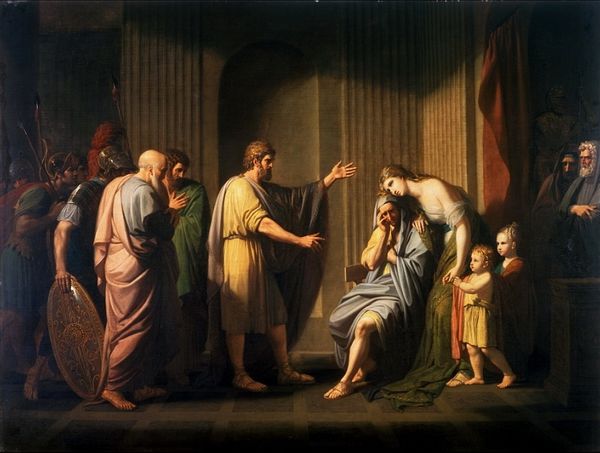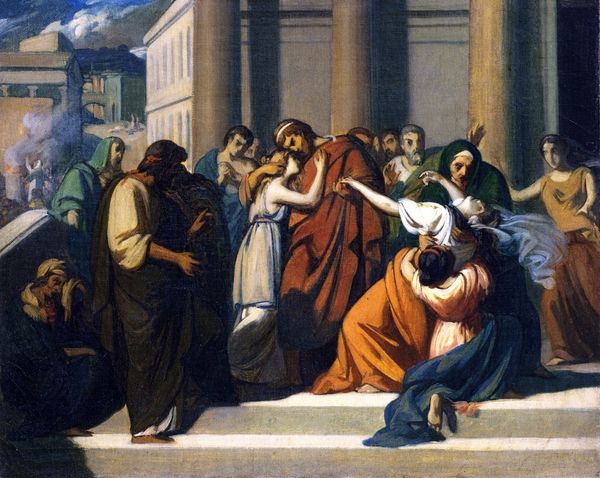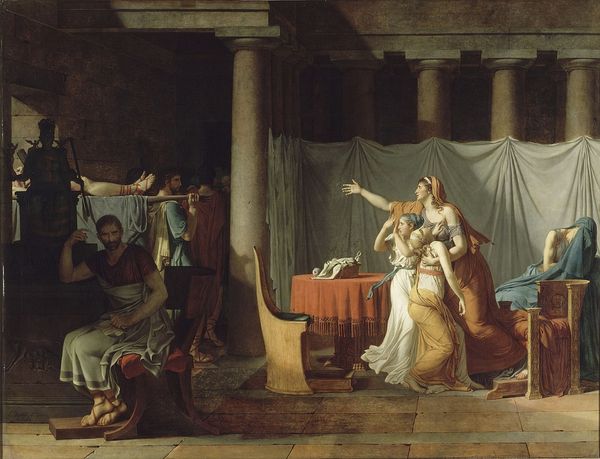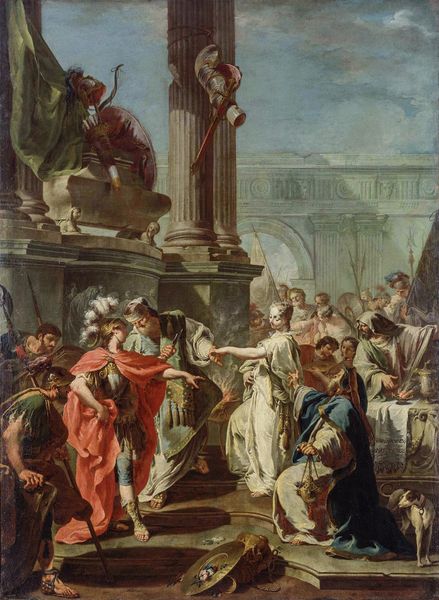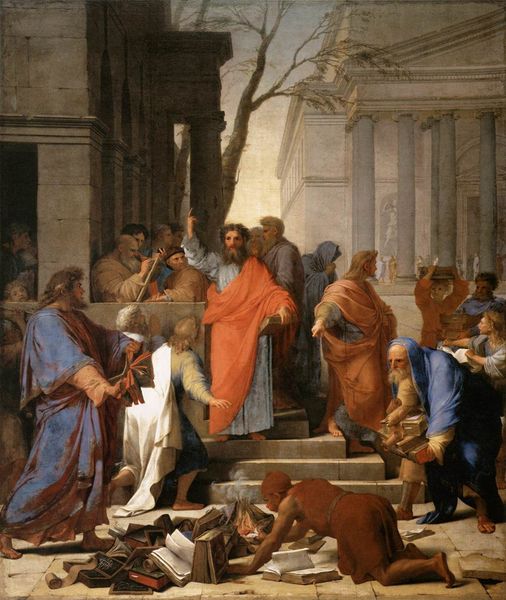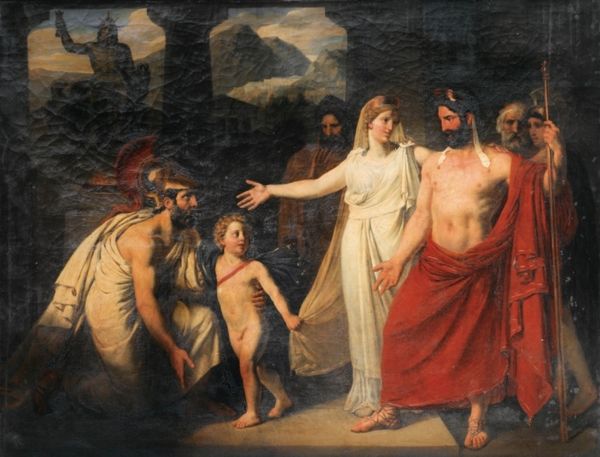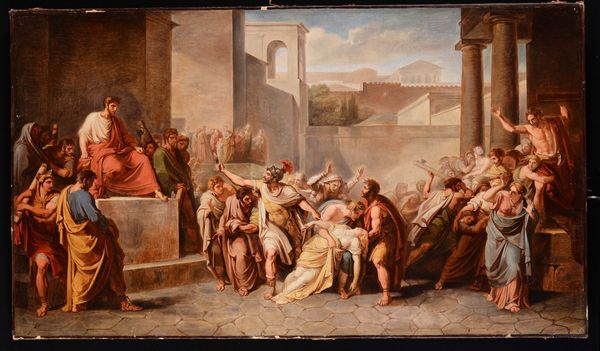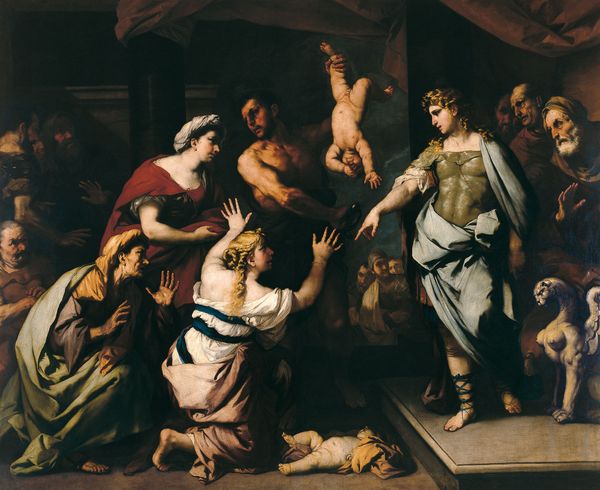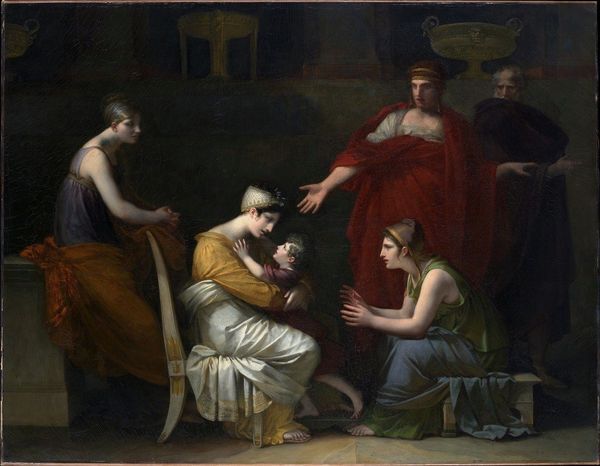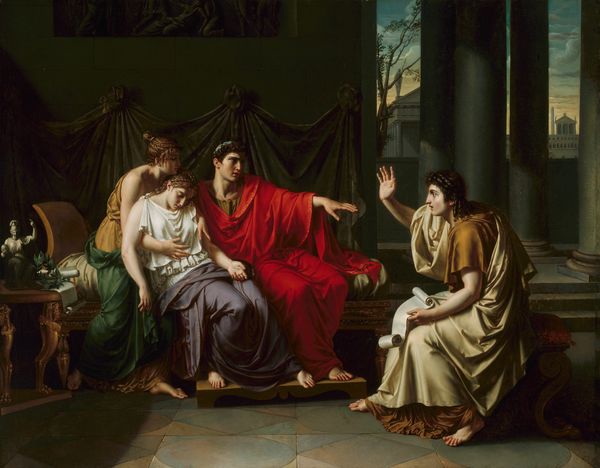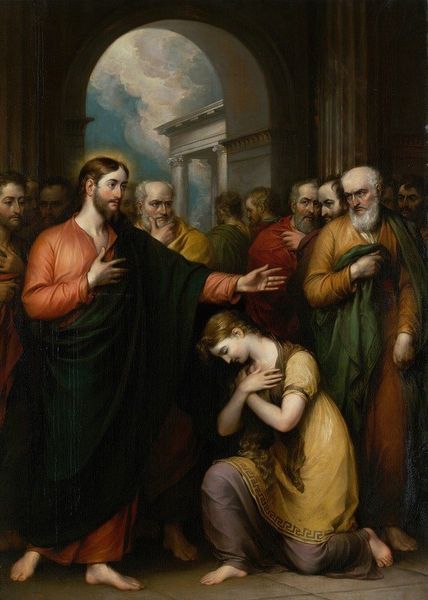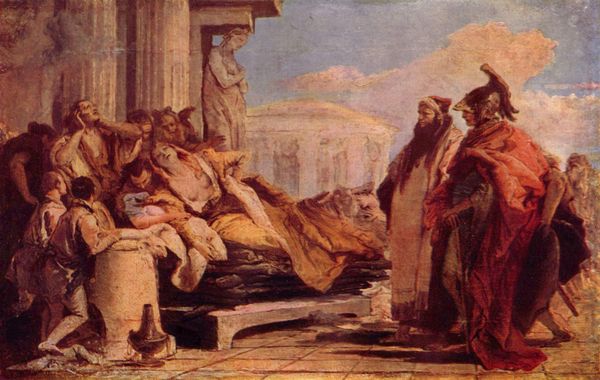
Belisarius Begging for Alms 1781
0:00
0:00
jacqueslouisdavid
Palais des Beaux-Arts de Lille, Lille, France
painting, oil-paint
#
portrait
#
neoclacissism
#
narrative-art
#
painting
#
oil-paint
#
sculpture
#
greek-and-roman-art
#
figuration
#
history-painting
#
academic-art
Dimensions: 288 x 312 cm
Copyright: Public domain
Curator: Jacques-Louis David's "Belisarius Begging for Alms," completed in 1781, offers a poignant narrative tableau steeped in neoclassical principles. Editor: My first thought is the palpable despair emanating from this composition; it feels overwhelmingly somber. What strikes you initially? Curator: I'm immediately drawn to the meticulously structured arrangement. The architectural elements, those grand Doric columns, create a rigorous framework. See how the figures are carefully positioned within that space to emphasize their emotional states? The painting adheres so strictly to neoclassical ideals of order and clarity. Editor: True, but consider the materiality. The way David has rendered the aged skin and worn garments suggests an empathy for the realities of human suffering. He's not just showing us a historical scene, but inviting us to consider the materials that reflect a lived experience. Note the textures of those roughly hewn pillars and the weightiness of the cloak. The artist has captured the heavy hand of misfortune, so to speak. Curator: The strategic deployment of light and shadow definitely elevates the pathos. Note how the artist used light to enhance contrasts between wealth and poverty. It draws our eye toward Belisarius' face, underscoring the injustice of his fate. But his placement and that composition have such purpose that extends past emotional cues. The triangle of figures is designed with visual theory that emphasizes the importance of academic training in the construction of an emotionally engaging piece. Editor: Perhaps, but let’s not dismiss the broader social context of 18th-century France. The subject of a once-celebrated general brought to destitution and begging certainly offered a subtle commentary on the capricious nature of power and the fragility of social status. And I’d wager David understood this commentary to have far greater effect with careful use of material portrayal. Curator: That could be a valuable contextual element to keep in mind! The composition indeed offers viewers so much on which to chew. The painting offers an enduring study in controlled, classical pathos. Editor: And the raw, human drama rendered with such tactile skill invites sustained contemplation. Thank you!
Comments
No comments
Be the first to comment and join the conversation on the ultimate creative platform.
